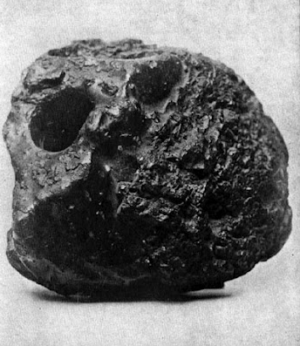A “coal torpedo” was the name given by Confederate Secret Service agents for a crude IED disguised as a lump of coal. The device was then introduced into the stocks of coal on ships and trains with the aim of causing an explosion in the boiler when it was shoveled into the engine.
The coal torpedo seems to have been invented by Capt Thomas Edgworth Courtney of the Confederate Secret Service. Courtney proposed the idea to Jefferson Davis motivated probably by the financial rewards promised by the Confederacy which were suggested could be 50% of the value of Union shipping destroyed by new inventions. In this case, financial reward became the mother of a number of inventions. Courtney was commissioned and formed a Secret Service Corps of 25 men with direction to to attack any Union vessel or transport carrying military goods found in Confederate waters, with his rewards (no salary) being paid in Confederate war bonds.
Details of Courtney’s plan leaked to the Union who put a price on his head. Courtney escaped to England, and tried to sell the design of the Coal torpedo to the British Navy, the French, the Spanish and Turkey, without success.
The Union naval forces on the Mississippi under Admiral David Porter issued General order 184 accordingly:
The enemy have adopted new inventions to destroy human life and vessels in the shape of torpedoes, and an article resembling coal, which is to be placed in our coal piles for the purpose of blowing the vessels up, or injuring them. Officers will have to be careful in overlooking coal barges. Guards will be placed over them at all times, and anyone found attempting to place any of these things amongst the coal will be shot on the spot.
Details of the actual ships destroyed by this means are unclear as records have been destroyed but it appears likely that a number of the devices functioned as intended.
Courtney’s torpedoes were manufactured carefully at the 7th Avenue Artillery shop in Richmond, Virginia. Actual lumps of coal were used to form a mold into which iron was cast. The walls of the devices surrounded a hollow sufficient to hold about four ounces of blackpowder. After filling, the void was closed with a threaded plug, dipped in beeswax and rolled in powdered coal to disguise it. The device, although small, could rupture the pressure vessel of a ship, causing much greater secondary damage.

The concept of coal torpdeos carried on. After the American Civil War the Fenian Brotherhood (see previous blog posts) had connections with both sides and there appears to have been a plot in the 1860s and 70s to use such devices to place in the furnaces of New York hotels and British shipping .
In WW1 German saboteurs operating in the US planned to use such devices to attack munitions ships, and in an earlier post I mentioned that such devices were found by US forces after overrunning the Germans in France in 1918.
In WW2 both the OSS and the SOE used similar devices, as did German spies. I have found reports that the Japanese also developed a similar tool at the Noborito research Institute, and they were used by Japanese commandos in raids in New Guinea. There is also a hint that the CIA explored this as a tactic to be used in Vietnam.
The OSS didn’t do things by halves and developed a coal camouflage kit for such devices, with a range of paints to enable the device to match variations in coal supplies.
